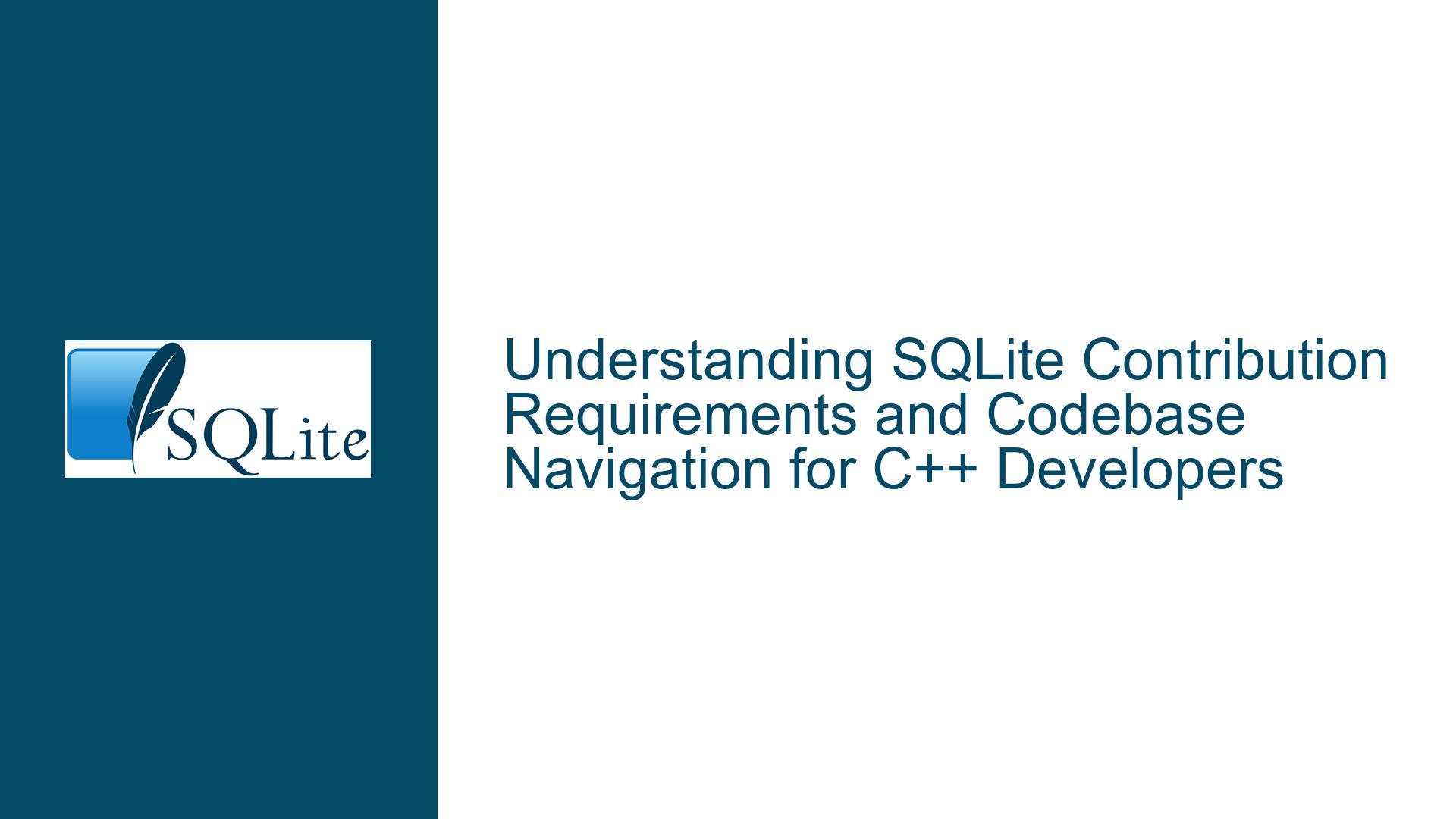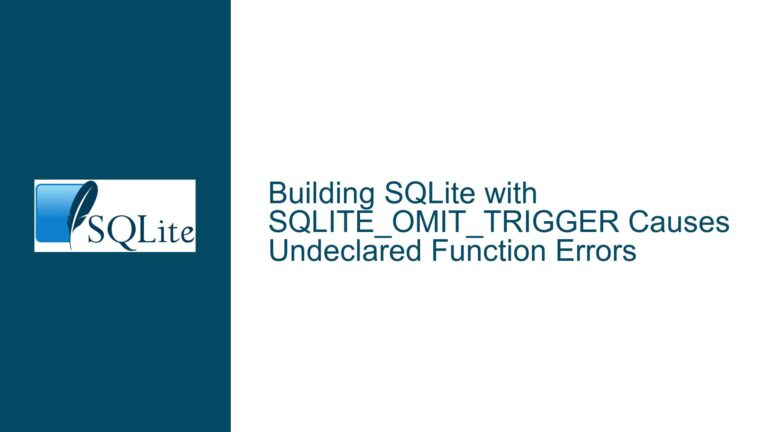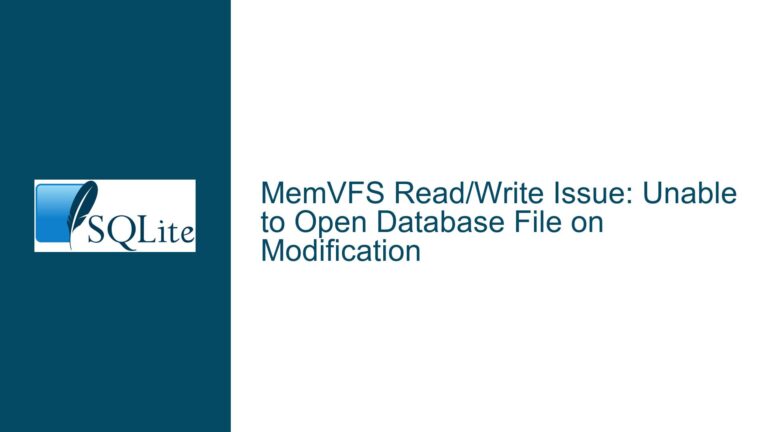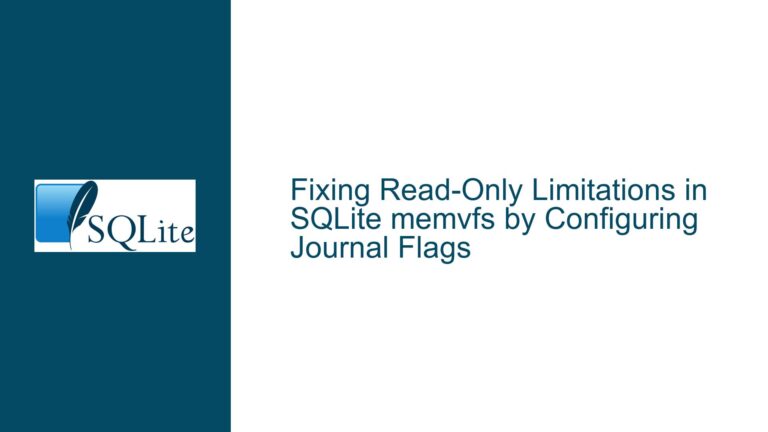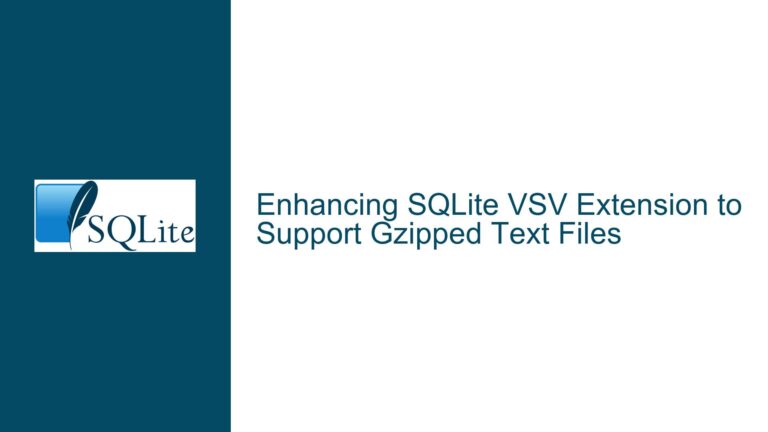SQLite Contribution Requirements and Codebase Navigation for C++ Developers
SQLite Contribution Requirements and Codebase Navigation Challenges
SQLite, being one of the most widely used embedded database engines, has a unique development and contribution model that differs significantly from many other open-source projects. For developers, especially those transitioning from C++ to C, understanding the contribution requirements and navigating the SQLite codebase can be daunting. This post delves into the intricacies of contributing to SQLite, the challenges faced by C++ developers, and the steps to effectively understand and engage with the SQLite codebase.
SQLite’s Unique Contribution Model and Licensing Constraints
SQLite operates under a distinct contribution model that is not as open as other open-source projects. The project’s founder, Richard Hipp, maintains a "Benevolent Dictator for Life" (BDFL) model, which means he has the final say on all contributions to the canonical source tree. This model ensures consistency and quality but also imposes specific constraints on how external developers can contribute.
One of the primary challenges for potential contributors is the licensing and legal requirements. SQLite is in the public domain, but this does not mean that anyone can contribute code directly to the project. Unlike projects that use licenses like BSD or GPL, SQLite requires explicit approval from Richard Hipp for any code to be included in the official source tree. This approval process is stringent and often involves more than just adding a public domain dedication or an SPDX clause in the code header. Contributors must understand that their patches or suggestions may not be accepted, even if they are technically sound.
The lack of a formal roadmap further complicates the contribution process. SQLite development is driven by immediate needs and fixes rather than a predefined feature roadmap. This means that contributors must be adept at identifying bugs or suggesting improvements that align with the project’s current priorities. The absence of a roadmap also means that contributors need to be proactive in understanding the project’s direction by following forum discussions and recent commits.
For C++ developers, the transition to contributing to SQLite involves not only understanding the project’s contribution model but also adapting to the coding practices and conventions used in the SQLite codebase. SQLite is written in C, not C++, which means that contributors must be proficient in C and familiar with its nuances. This includes understanding manual memory management, the lack of object-oriented features, and the use of preprocessor directives, which are prevalent in the SQLite codebase.
Navigating the SQLite Codebase as a C++ Developer
For C++ developers, diving into the SQLite codebase can be challenging due to the differences between C and C++ programming paradigms. SQLite’s codebase is highly optimized and relies heavily on C-specific features, which may not be familiar to developers accustomed to C++.
One of the first steps in understanding the SQLite codebase is to familiarize oneself with the core components and their interactions. SQLite’s architecture is modular, with distinct components handling tasks such as parsing SQL statements, managing transactions, and interacting with the underlying storage engine. Developers should start by exploring the sqlite3.c file, which contains the majority of the SQLite implementation. This file is monolithic and includes everything from the SQL parser to the virtual machine that executes bytecode.
Understanding the SQLite codebase also requires a solid grasp of data structures and algorithms. SQLite uses a variety of data structures, such as B-trees for indexing and hash tables for symbol tables. Developers should be familiar with these data structures and their implementations in C. Additionally, SQLite’s query optimization and execution involve complex algorithms that require a deep understanding of database internals.
For C++ developers, transitioning to C involves adapting to the absence of features like classes, templates, and exceptions. Instead, SQLite uses structures and functions to achieve modularity and reusability. Developers must also become comfortable with manual memory management, as SQLite does not use C++’s RAII (Resource Acquisition Is Initialization) paradigm. This means that developers need to be meticulous about allocating and freeing memory to avoid leaks and undefined behavior.
Another challenge is understanding SQLite’s use of preprocessor directives and macros. SQLite employs macros extensively for code generation and optimization, which can be difficult to decipher for developers unfamiliar with this practice. Developers should take the time to understand how these macros work and how they contribute to SQLite’s performance and portability.
Effective Strategies for Contributing to SQLite and Enhancing Codebase Understanding
Contributing to SQLite requires a combination of technical skills, persistence, and a deep understanding of the project’s goals and constraints. For developers looking to contribute, the following strategies can help navigate the challenges and increase the likelihood of their contributions being accepted.
First and foremost, developers should focus on identifying and reporting bugs. SQLite is a mature project with a robust codebase, but bugs can still occur, especially in edge cases. Developers can use tools like Valgrind and AddressSanitizer to detect memory issues and other bugs in their local builds of SQLite. When reporting bugs, it is essential to provide detailed information, including steps to reproduce the issue, the expected behavior, and the actual behavior observed.
In addition to bug reporting, developers can contribute by suggesting improvements or new features. However, it is crucial to ensure that these suggestions align with SQLite’s design philosophy and priorities. SQLite emphasizes simplicity, reliability, and performance, so proposals that enhance these aspects are more likely to be considered. Developers should also be prepared for the possibility that their suggestions may be reimplemented by the core team rather than accepted as-is.
To enhance their understanding of the SQLite codebase, developers should engage with the SQLite community through forums and mailing lists. The SQLite forum is an excellent resource for asking questions, sharing ideas, and learning from other developers’ experiences. Participating in discussions can provide valuable insights into the project’s direction and the challenges faced by the core team.
Developers should also take advantage of the extensive documentation available on the SQLite website. The SQLite documentation includes detailed explanations of the codebase, architecture, and APIs, as well as guidelines for contributing. Reading through the documentation can help developers gain a deeper understanding of SQLite’s internals and best practices for working with the codebase.
Finally, developers should consider studying the SQLite source code in depth. This involves not only reading the code but also experimenting with it by making small modifications and observing the effects. Building SQLite from source and running the test suite can help developers understand how the codebase works and identify areas for improvement. The SQLite test suite is comprehensive and covers a wide range of scenarios, making it an invaluable resource for learning and debugging.
In conclusion, contributing to SQLite requires a unique combination of technical skills, persistence, and a deep understanding of the project’s goals and constraints. For C++ developers, navigating the SQLite codebase involves adapting to the differences between C and C++ and becoming proficient in C-specific features and practices. By focusing on bug reporting, suggesting improvements, engaging with the community, and studying the codebase, developers can enhance their understanding of SQLite and increase their chances of making meaningful contributions.
